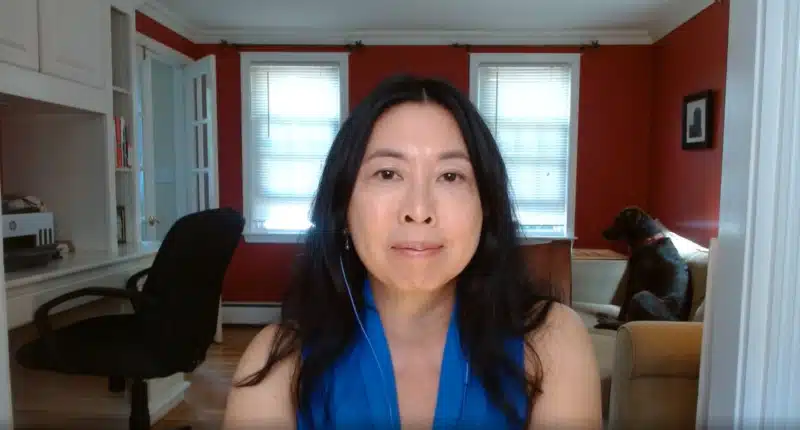How to keep up with accelerating customer expectations: The MarTech Conference keynote
Top marketers discuss big changes underway in how consumers and B2B buyers engage with brands.
How can brands keep up with the fast-changing and ever-increasing customer expectations? That was the focus of top marketers in the keynote discussion kicking off Day 1 of The MarTech Conference.
“The idea at the heart of this program is that customers — both consumers and B2B buyers — are accelerating away, designing their own customer journeys, looking for seamless and often self-serve experiences, and are able to surf away from a friction-packed brand experience with the click of a mouse,” said Kim Davis, MarTech’s editorial director.
“The challenge for marketers is to catch up with those customers. If possible, get ahead of them, and be waiting in the right place with what they need,” he added.
Here’s how brands can catch up to these evolving, and accelerating, consumer expectations.
Understand your untethered customers
Davis pointed to a recent MarTech article where contributor Gene De Libero described “untethered consumers who move faster than every brand they engage with.”
“And it’s not just consumers, B2B buyers are unleashed too,” Davis said. “Customers are way ahead of marketing and sales — doing their own research, reading reviews, showing up everywhere and expecting to be recognized and remembered.”

With customers in the driver’s seat, brands have to make it even more attractive to engage with them. Otherwise, the competition is a click away.
“Brands really need to be easy to work with,” said Alicia Arnold, manager director for martech consultancy fifty-five. “They need to provide a positive experience. And they need to meet customers’ needs.”
Brands also need to understand the customer journey across digital and offline touchpoints, and be able to orchestrate that journey.
Dig Deeper: What is customer journey orchestration and how does it work?
“What are those customers looking to do with you?” Arnold asked. “And how can you best understand what they’re thinking, what they’re feeling, what they’re doing so that you can tie together that technology and all of those pieces across your internal teams that make your processes the best that they could be for these customers?””
Get more personal to match customers’ values
Consumers are also raising their standards for the values they expect from brands.
“If you don’t share your customers’ values, if you can’t empathize with them, if you don’t bring them into a community and offer them not just a product or service but an experience, forget about it,” said Davis.
This same principle applies to B2B buyers.
“What we’re expecting from brands is almost personified,” said Arnold. “We’re expecting brands to be trustworthy, we’re expecting brands to provide value. Almost like you’re looking to take brands and have them as your personal network – you’d want a brand that resonates and fits with those things that matter most to you.”

Marketers should adopt a dual strategy that includes brand goals and customer expectations. Begin with your brand, then tailor it so that you can meet the customers where they are.
“Think about what you’re looking to do as a brand and where that intersects with the consumers,” Arnold explained. “It’s got to be a mix of both, the brand and the consumer. Find that commonality. Once you find out what that is, you can start to set the strategic direction.”
Eliminate the waste in communications
A lot of these shifts in customer expectations were accelerated during the pandemic, as many jobs transitioned to work-from-home. This merging of work duties and home responsibilities means there’s even more of a need for marketers to cut through the noise. This applies to consumer marketing, but also especially for B2B messaging.
“More and more of the workforce has been positively influenced to manage their work responsibilities within their personal life and obligations,” said Jess Weimer, VP, enterprise marketing at freelancing platform Upwork. “This further underscores the need to eliminate wasted or non-compelling outreach to your prospects.”
She added, “It’s important to get to the point on how you can solve their problem from a human-to-human perspective, not business-to-business. And that’s where tools like marketing automation and sales sequence tools can be a blessing or a curse.”
The same message can’t be used generically for every team member within an account. Instead, multiple messages have to be tailored and humanized to individuals.
One thing marketers seem to agree on — there’s no going back. The bar will continue to be raised, and brands must meet it by delivering humanized messages and experiences that demonstrate to customers their shared values.
Contributing authors are invited to create content for MarTech and are chosen for their expertise and contribution to the martech community. Our contributors work under the oversight of the editorial staff and contributions are checked for quality and relevance to our readers. MarTech is owned by Semrush. Contributor was not asked to make any direct or indirect mentions of Semrush. The opinions they express are their own.
Related stories
New on MarTech